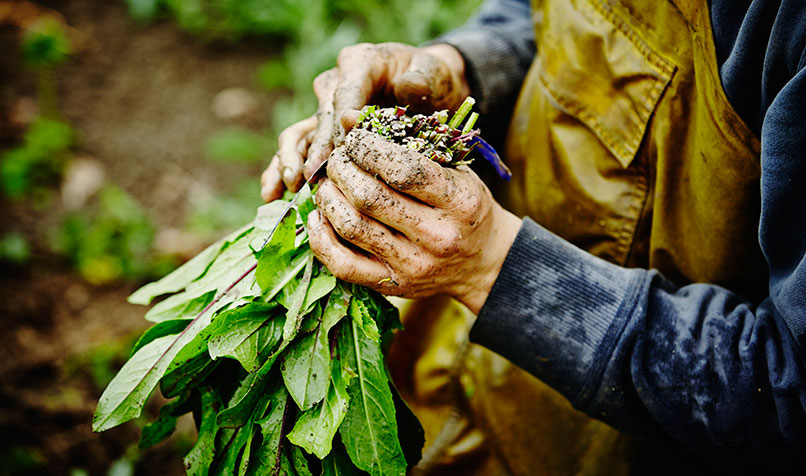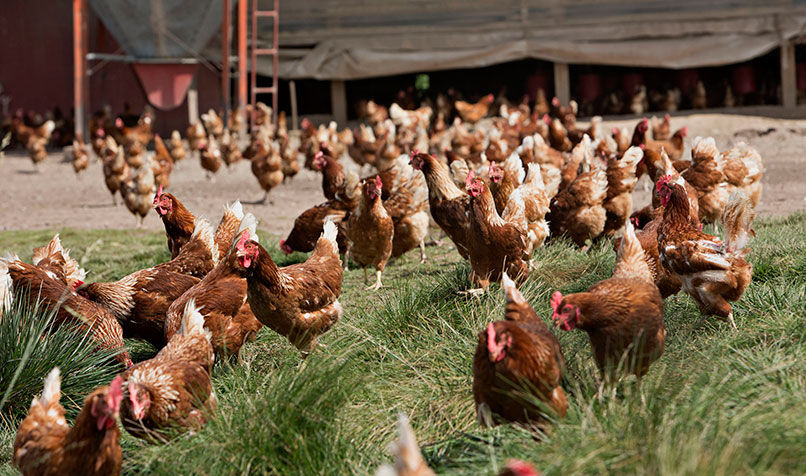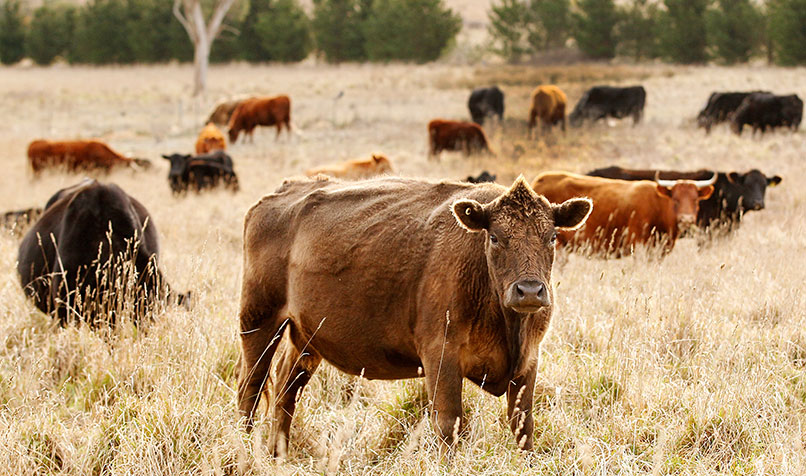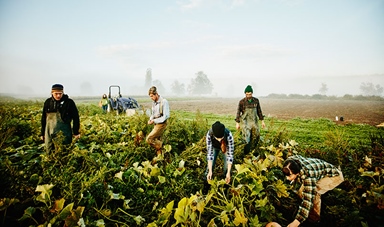Loading component...
At a glance
There’s a growing hunger for Australia’s organically grown produce. Two in every three Australian households report having bought organic products in the past year, contributing to a domestic consumer market predicted to be worth A$2 billion by 2018. If you are a millennial, or you have young children, the likelihood that some of your grocery budget has gone to organics is even higher.
Worldwide, the market for organics in 2015 was worth US$81.6 billion – a fourfold increase from 2000, according to the Australian Organic Market Report 2017. The US is far and away the biggest market, accounting for 44 per cent of organic food and beverages sold. However, individually, the biggest consumers of organics are shoppers in Denmark, Switzerland, Luxembourg and Sweden. Figures from Euromonitor reveal that in 2016, the Danes were the world’s biggest spenders on organics, handing across US$107.10 per person.
Australians are, per capita, the world’s 16th highest spenders on organic products, averaging US$20.40 (A$26) a year per person. The most common organic items in our shopping bags are fruit and vegetables, but increasingly we’re choosing organic eggs (sales in Australia are up 10 per cent in two years) as well as dairy products, red meat and poultry (all up 6 per cent).
"As a consumer it is easier than ever to choose organic."
While better health is the number-one reason people give for switching to organic products, the science is out on whether going organic makes any difference.
In 2012 a group of researchers from Stanford University in the US carried out what they said was the most comprehensive meta-analysis to date of existing studies comparing organic and non-organic foods. After sifting through thousands of papers, they found little evidence organic food was more nutritious or less risky for health, although it did reduce exposure to pesticides. They did note, however, that all of us would benefit from eating more fresh fruit and vegetables, organic or not.
Organic growth in Australia

The growing consumer consciousness around health and wellbeing, as well as increasing demand from China for Australia’s clean produce, signals “blue skies ahead” for Australia’s organic industry, says Dr Andrew Monk, chairman of Australian Organic Limited.
While organic sales currently make up only about 1 per cent of Australia’s national food and beverage total, Monk believes that will grow to 3 to 5 per cent in the next five to 10 years, closer to the rates now found in the US and Europe.
“As a consumer it is easier than ever to choose organic,” says Monk. “I can get quality organic wines at Dan Murphy’s, and organic yoghurt, mince, butter and even organic chocolates in the supermarkets.”
Organics are now the US’s fastest-growing retail food sector, according to the Organics Trade Association’s 2016 Organic Industry Survey. Europe’s Research Institute of Organic Agriculture (FiBL) says the European market grew 13 per cent between 2014 and 2015, the first double-digit expansion of the industry since the global financial crisis.
“It is market driven and [Australia is] about five to 10 years behind the US and Europe,” says Monk. “But we don’t want it to grow too fast or it overheats. It is organic growth and we have a massive opportunity here that is very much unharnessed.”
Double-digit increase in organic exports
Australia’s organic exports increased to all continents in 2016, growing 17 per cent from the previous year, states the Australian Organic Market Report 2017. About one third of exports went to the East Asia market – China, South Korea, Hong Kong and Singapore – and another third landed in North America. The top seller was organic beef, but organic fruit and vegetables, dairy and wine were also heavy hitters.
China’s widely reported issues with pollution and some recent breaches of food safety standards – such as the tainted baby formula scandal in 2008, which killed six babies and made many more infants ill – has made it a key market. Cross-border e-commerce sites – such as www.jd.com and www.kaola.com – have given international suppliers, such as organic infant formula and baby food maker Bubs Australia, access to a large and enthusiastic Chinese audience.
"Australia has some of the highest food safety standards in the world and that is recognised by the Chinese."
Since listing on the Australian Securities Exchange on 3 January 2017, Bubs has more than doubled its share price. CEO Nicholas Simms says organics have a much higher share of the baby food sector than other categories. Globally, organic products are lucky to secure 4 to 5 per cent of their market, but organic baby food holds more than 20 per cent, he says.
Significant trade deals in the past few months have helped Bubs expand further into the Chinese market and bolstered its share-market value.
For close to 40 years, China has enforced a one-child policy and, although that has recently been relaxed, Simms says middle-class Chinese parents are willing to pay a premium when it comes to their children.
“Parents in China are seeking the best quality products for their children,” he says. “There are inherent concerns with locally sourced products and their authenticity. Australia has some of the highest food safety standards in the world and that is recognised by the Chinese.”
Yet the China market is not always so kind. On 2 December 2016, organic infant formula maker Bellamy’s Australia saw its share value plummet 43.5 per cent to A$6.35 in a little over an hour. The drop came after it warned that Chinese import rule changes for 2018, relating to the fresh registration of foreign vendors to guarantee the safety of food products, had seen other formula makers dump their products in China before the registration deadline. Bellamy’s had to drop its own prices as a result.
Bellamy’s hit another roadblock in July 2017, when its newly acquired Camperdown Powder canning facility in Melbourne’s Braeside had its Chinese export licence suspended by the Certification and Accreditation Administration of the People’s Republic of China (CNCA). The regulator had acted on a third-party complaint about quality and record-keeping.
The China market supplies a third of Bellamy’s revenue, according to its February 2017 half-yearly earnings update. Trading in Bellamy’s shares was suspended for two weeks, although the company was still processing infant formula at China-approved plants run by Fonterra and by Bega. After the export licence was reinstated in early August, Bellamy’s shares recovered.
Keeping up with the demand for organics

The demand for organics is certainly strong, but what about supply? At last count, Australia had close to 2100 certified organic producers, more than 1100 processors and more than 500 certified handlers.
As a country that holds more than half the world’s certified organic farmland – 27 million of the 51 million organic hectares planted globally – Australia is well placed to take a bigger bite of the global organic cherry.
International industry consultant Marg Will, CEO of Organic Systems and Solutions, says Australia has several key advantages: its diverse landscape allows a wide variety of products to be grown; it has good shipping routes to Asia; and it brought in the first organics standards in the world 20 years ago, which gives its organic producers a long-term advantage.
Australia can be proud of its excellent regulatory oversight. This ensures a certified organic product is what it says it is: free from synthetic fertilisers and pesticides, not genetically modified, free from added hormones or antibiotics, and independently audited.
What organic producers in other countries most envy, she says, is the support given at industry and government level through research and development programs, and organisations such as Austrade, and Meat and Livestock Australia.
She fears plans to remove the requirement for government-approved certification that currently accompanies all of our exports will impact market confidence.
“Many of our competitors, including the US, don’t have that extra layer of verification,” she says. “It is of great concern that the Department of Agriculture wants to pull out because they don’t see it as a food safety issue; we’d like to see it housed in the Department of Foreign Affairs and Trade.”
Riding the wellness wave
Will believes the organic movement was first driven by a growth in cancer diagnoses and an awareness of food as medicine in the 1970s and 1980s. The latest demand springs from what she calls a second wellness wave, with a focus on health and fitness, concerns about big corporations screwing down farmers’ returns, and a growing desire to leave a lighter footprint on the planet.
She doesn’t believe supply is likely to ever catch up with demand but acknowledges converting to organic practices has appeal for many farmers.
“It is the one industry that makes [farmers] a price maker, not a price taker,” says Will. “Yes, it is a robust system with additional paperwork but I think we need it. It gives us market access, and it gives our customers assurance in a very unsure world.”
Is organic farming the future?

Since University of Michigan professor Catherine Badgley suggested 10 years ago that organic farming methods could make a difference in the fight against world poverty, the issue has been fiercely debated.
Agricultural industry consultant Steve Savage, writing in The Wall Street Journal in 2015, referred to National Agricultural Statistics Service data for 2011 that showed for organic farming to match conventional farming’s production of 14 staple food crops in the US, another 6 million hectares (14.5 million acres) – “roughly equal to all of the farmland in Indiana” – would have to be put to the plough.
Back in 2002, plant breeder Norman Borlaug, who received the Nobel Peace Prize in 1970 for increasing crop yields and the world’s food supply, declared: “We aren’t going to feed six billion people with organic fertiliser. If we tried to do it, we would level most of our forest and many of those lands would be productive only for a short period of time.”
Sceptics say organic farming’s strict rules limit innovation; for example, its bans on genetically modified crops mean that organic farmers can only selectively breed plants for pest resistance and higher yields – a much slower process than gene splicing.
However, Badgley and others who support the case for organic agriculture say it’s not so much about the yields as wastage.
Writing in the same Wall Street Journal edition as Savage, Badgley said agriculture already produces enough food for nine billion people; we just don’t use it wisely.
“Only 43 per cent of the cereal grains grown worldwide becomes food for people; 35 per cent becomes livestock feed and 10 per cent goes to biofuels, high-fructose corn syrup and other processed products,” she said. “One-third of food produced for human consumption … is wasted.”
Home-grown supermarket
Five years ago, Jenny and Leo Watling opened their Apples and Sage Organics Wholefoods store in the Melbourne suburb of Balwyn.
The couple had been eating organic for more than 20 years, and knew how difficult it could be to obtain organic foods.
Experienced in retail, they did their homework, created a clear and detailed business strategy, and set about opening the doors of one of the biggest organic stores in Australia.
Demand for products, however, is greater than they can supply. “There is a lot of innovation from the suppliers and a lot of new suppliers with start-up companies,” says Leo. “But there’s still not enough. I will always need more stock.”
Apples and Sage offers more than 5000 organic products, from grocery items, fruit and vegetables, meat and dairy foods to ready-made meals, wine and beer, and cleaning products. Fermented kombucha and kimchi are in hot demand, adds Leo.
“We notice our customers don’t buy a massive basket once a week; they might buy four times a week,” he says. “They cook what they buy – it keeps it fresh. Organic food doesn’t have preservatives.”
Everything inside Apples and Sage is individually certified, and the store itself is certified. Several times a year, the business is inspected. Certifiers check the invoices, check the farms the products come from, and do a stocktake to check the stock matches the quantities on the invoices.
Leo doesn’t bemoan the paperwork. “Australia has very strong standards, which is fantastic,” he says.
Apples and Sage has three core groups of customers. There are those who are wedded to eating certified organic produce all the time, are worried about the planet’s health and they want to support local farming.
Millennials are also strong supporters of the business. They express concern about climate change and are into personal health. They ask about what they are buying and want to know how items are sourced.
The third group “pop in and out of organics”. They are selective in what they buy, perhaps leaving the organic toilet paper on the shelf but adding organic vegetables to their basket.
Leo would like changes to labelling laws so the word organic can only be used on products certified as meeting Australia’s National Standard for Organic and Bio-Dynamic Produce.
“We knew that internationally organics was one of the biggest retail growth areas … it will continue to grow because of the environmental movement and the younger age group questioning everything,” says Leo.

